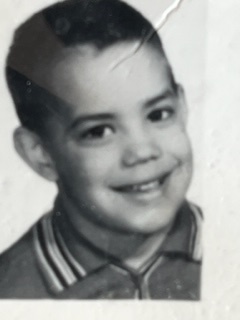Dying from the White Racial Frame
by Tim Johnson
Retired pastor of Cherokee Park United Church
Editor’s note: This is the fourth in a series that Tim Johnson is writing for the Community Reporter. His reflections are drawn from the 2019 Overcoming Racism Conference held at Metropolitan State University.
What would make Trevor, a 41-year-old white man, dying of liver disease, reject “Obamacare” even though doing so means disabling pain and eventual death from the liver disease with which he is afflicted? According to Jonathan Metzl, author of Dying of Whiteness – How the Politics of Racial Resentment is Killing America’s Heartland, Trevor himself answers the question rather directly, “We don’t need any more government in our lives. And in any case, no way I want my tax dollars paying for Mexicans or welfare queens.” Metzl goes on to lay out a cogent argument for how racial resentment, at its core a deep belief in white supremacy, is motivating people in the heartland to support policies that shorten their own lives. In each of the three areas Metzl studies, (health care, education and gun control), he finds solid evidence that a belief in the superiority of whiteness is causing whites to support policies that are harmful to themselves and their families.
It would come as no surprise to Joe Feagin, author of White Racial Frame, that even on death’s door, Trevor would hold on to the supremacy of whiteness rather than embrace the health care which would enable him to live. In a highly influential work, Feagin says we are all the recipients of a world view which sees life through a lens that insists whites are superior to all others, what Feagin calls “the white racial frame.” The white racial frame claims a superiority through the telling of history, the valuing or art, approaches to education and the way we learn, bias about language and personal appearance, the list goes on.
Concrete examples of the white racial framing at work are numerous. The Minnesota Historical Society experienced strong resistance even to adding the words “at Bdote” to the Fort’s name, precisely because Bdote is a direct challenge to history told through a white racial frame lens. If no civilization existed prior to white arrival, whites can claim a Manifest Destiny to “civilize” the West. “Bdote” is a reminder of a different history that counters this pristine, genocide-denying history of Minnesota.
Just this past January a black teenager in Texas was suspended and told he would be denied permission to participate in the school’s graduation ceremony unless he cut his dreadlocks. This only makes sense viewed through the lens of a white racial frame which says certain hair styles are superior to other hair styles, notably hair styles most commonly worn by whites.
Until 1978, when the U.S. Congress passed The American Indian Religious Freedom Act, it was illegal for Dakota and Ojibwe people in Minnesota to participate in traditional Indian spiritual practices. The illegality of Indian spiritual practices was the direct result of a white racial frame that saw the religion embraced by most whites as superior to the religious practices of Indian people.
Trevor, along with all the rest of us, has grown up with this framing of white superiority. He would literally rather die than relinquish something that has become so central to his being. This lens of white superiority was part of our nation’s founding. As Feagin notes, this frame is so dominant that few whites “are able to see it or think about it critically.” Racism brings a huge cost to those who feel its burden directly, but it also comes with no small cost to Trevor and all of us who live viewing the world through the distortions of the white racial frame.
[The fifth essay in this series, The Spirit of Racism, will appear in May.]



